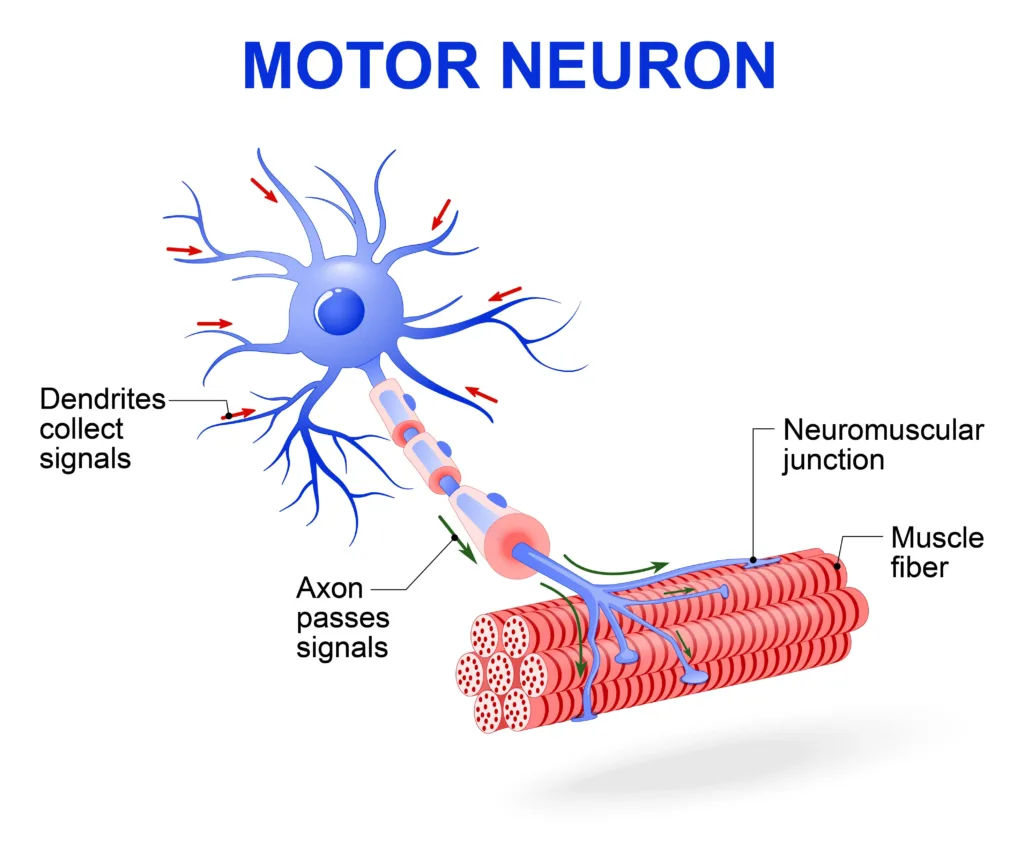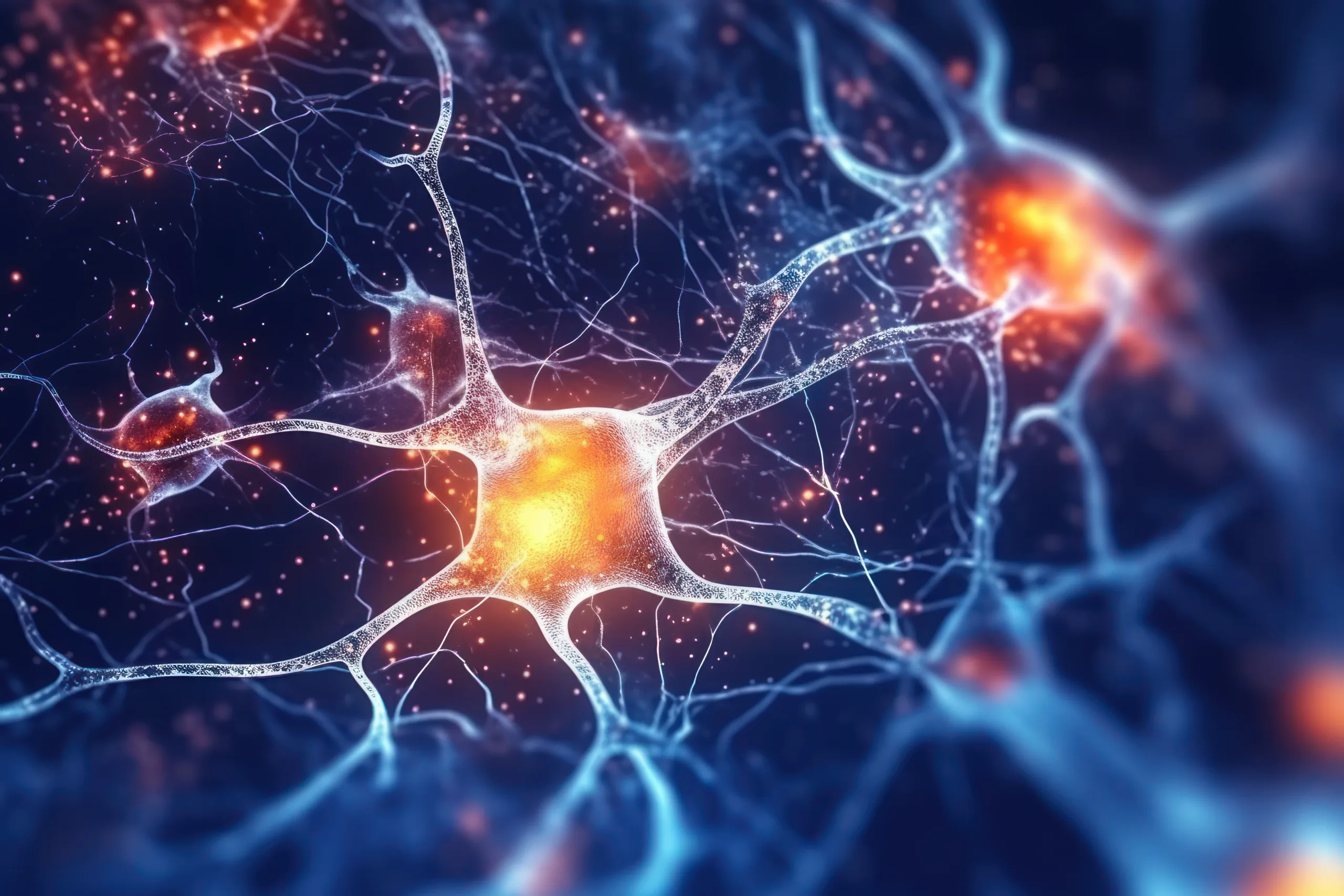Contents
- Introduction
- What is Muscle Memory?
- How does Muscle Memory Work?
- How do you develop Muscle Memory?
- How long does Muscle Memory last?
- How long does it take for Muscle Memory to come back?
- Can Muscle Memory be lost?
- How to improve Muscle Memory?
- How many repetitions does it take to develop Muscle Memory?
- Conclusion
Introduction
Muscle memory is the result of a fascinating interplay between neurons, muscles, and practice—a phenomenon that transforms conscious effort into effortless mastery. It is intricately embedded in the complexities of the brain and body. It acts as the architect enabling us to execute tasks with apparent innate precision. Think about the first time you struggled to tie your shoelaces or play a musical instrument; fast forward through practice, and those once-challenging motions become second nature. Muscle memory plays a role in these fascinating phenomena. This article explores the marvels of muscle memory, from the firing of neurons to the reinforcement of neural pathways; join us on a journey into the depths of how the brain sculpts the blueprint for expertise through muscle memory.
What is Muscle Memory?
Muscle memory, despite its name, is not about muscle but is rather about the brain. When we learn a new skill or practice a particular movement, the brain creates neural pathways and connections that control the associated muscle groups [1, 4]. These connections become more efficient and well-coordinated through repetition, performance of the task with increased accuracy and ease [6].
Muscle memory is a complex process that involves both the brain and the body’s muscles and nervous system. It is a fascinating concept that has intrigued athletes, musicians, and professionals across various fields. It’s the reason behind the remarkable improvement in performance that comes with practice and repetition [2, 4]. This article delves into the science behind muscle memory, its practical applications, and how understanding this phenomenon can help athletes excel in their chosen pursuits [3].
How does Muscle Memory work?
The process of muscle memory involves a series of complex neurological events within the brain, and it can be broken down into several stages. Here’s a detailed look at what happens inside the brain during the development and execution of muscle memory [3];
1. Learning Phase
Neural Pathway Formation: When a new skill or task is first learnt, the brain begins to create new neural pathways. These pathways connect regions involved in motor planning and execution. The primary motor cortex is a key player in initiating and controlling voluntary movements [5, 6].
Synaptic Changes: Learning involves strengthening the connections (synapses) between neurons. As movements are practiced, these synaptic connections become more efficient, allowing signals to travel more quickly and reliably along the neural pathways [5, 6].
2. Repetition and Practice
Myelination: With repeated practice, the neural pathways become more insulated with myelin, a fatty substance that speeds up the transmission of signals. Thicker myelin sheaths enhance the efficiency of communication between neurons, allowing for smoother and faster execution of movements [2, 5, 6].
Basal Ganglia and Cerebellum Involvement: The basal ganglia and cerebellum play significant roles during repetitive practice. The basal ganglia contribute to skill learning and the automation of movements, while the cerebellum refines and coordinates motor patterns, ensuring precision and timing [5, 6].
3. Automatisation
Transfer from Conscious to Automatic Processing: As the skill becomes more familiar, the process transitions from conscious, intentional control to more automatic and subconscious control. This shift involves changes in the involvement of different brain regions, with increased reliance on the basal ganglia and cerebellum for well-coordinated and efficient movements [1, 5, 6].
Reduction in Frontal Lobe Activity: The prefrontal cortex, responsible for decision-making and conscious control, may become less active as the skill is automated. This allows the skill to be performed more effortlessly and with less conscious effort [4, 5, 6].
4. Feedback and Adjustment
Sensory Feedback: The brain continuously receives feedback from sensory systems, including proprioception (awareness of body position), vision, and touch, during the execution of the skill. This feedback helps the brain make real-time adjustments to improve accuracy and consistency [5, 6].
Hippocampal Involvement: The hippocampus, involved in memory and learning, may play a role in the consolidation of motor memories during this phase, contributing to the long-term retention of the skill [5, 6].
5. Retention and Recall
Long-Term Memory Storage: The well-established neural pathways and strengthened synaptic connections contribute to the long-term storage of the skill in memory [1, 5, 6].
Retrieval Process: When the skill is later recalled and performed, the brain efficiently retrieves the stored motor patterns and executes the movement with a high degree of accuracy, often without the need for conscious thought [5, 6].
6. Challenges and Adaptation
Neuroplasticity and Adaptability: The brain’s plasticity allows it to adapt to changes. If there are errors or bad habits in the learned skill, the brain remains adaptable, and with conscious effort and retraining, it can modify the neural pathways to correct and optimise the movement [5, 6].
How do you develop Muscle Memory?
Muscle memory is a complex process involving neuromuscular adaptations, motor unit recruitment, synaptic plasticity, myelin formation, muscle fibre adaptations, and a cognitive component. Repeating specific movements optimises communication between the brain and muscles, establishing neural pathways [6, 7]. Motor unit recruitment enhances coordination, while synaptic plasticity strengthens connections between neurons. Myelin formation improves nerve signal transmission, and muscle fibre adaptations include structural and biochemical changes [12]. Cognitive processes, such as conscious practice and visualisation, contribute to muscle memory. Repetition and consistency are crucial for developing muscle memory, resulting in more efficient neural pathways and improved performance over time [8].

How long does Muscle Memory last?
Muscle memory, in the context of motor skills and physical activities, does not have a fixed duration. The term “muscle memory” is somewhat misleading because it’s not an actual memory stored in the muscles but rather a retention of motor patterns in the nervous system. The duration of muscle memory depends on various factors, including the complexity of the skill, the intensity and duration of previous training, and the individual’s overall health and fitness level [6].
Here are some key points to consider;
Retention Period – Basic motor patterns and simple skills may be retained for a shorter duration, while complex movements developed through extensive training may persist longer [6, 9].
Consistency of Practice – Regular practice reinforces and maintains muscle memory. If practice stops, associated muscle memory may gradually fade [6, 9].
Relearning Speed – Despite diminished muscle memory, relearning a skill is often faster than learning it from scratch due to the quicker reactivation of previous neural pathways [6, 9].
Skill Complexity – Intricate movements or precise coordination may require more consistent practice to maintain muscle memory [6, 9].
Individual Differences – Retention varies among individuals, influenced by factors like age, genetics, and overall health [6, 9].
Periodic reinforcement through practice is crucial for maintaining muscle memory. Neural pathways associated with skill may weaken over time without regular practice, but with renewed practice, these pathways can be reactivated, enabling faster relearning. Muscle memory’s duration is not uniform and depends on individual circumstances and the nature of the skill or activity [6, 8, 9].
How long does it take for Muscle Memory to come back?
The time it takes for muscle memory to “come back” can vary widely depending on several factors, including the complexity of the skill, the duration and intensity of previous training, and individual differences. Here are some general considerations [9, 11];
Previous Training Duration – If there was extensive training in a particular skill or activity, muscle memory for that skill may come back more quickly. The longer and more consistently a skill was practiced in the past, the more ingrained the neural pathways associated with that skill [9, 10].
Skill Complexity – Simple motor skills may come back faster than complex movements. Basic movements that are part of daily activities or fundamental exercises might return relatively quickly, while more intricate skills may require more time and practice [9, 12].
Consistency of Practice – If practice was consistent before taking a break, muscle memory is more likely to come back faster. Regular and repetitive practice helps reinforce neural pathways [9, 12].
Relearning Speed – Muscle memory often involves a faster relearning process compared to learning a skill for the first time. The neural pathways associated with the skill may still exist, making it easier for the body to reacquire movement [9, 12].
Individual Factors – Individual differences, such as age, genetics, and overall health, can influence the speed at which muscle memory returns. Younger individuals and those with a history of physical activity may find it easier to regain muscle memory [9, 12].
Mental Rehearsal and Visualisation – Engaging in mental rehearsal and visualisation of the skill can also contribute to the reactivation of muscle memory. While not a substitute for physical practice, mental practice can enhance the relearning process [9, 12].
It’s important to note that there is no one-size-fits-all answer, and the time it takes for muscle memory to come back can vary from person to person and from skill to skill. Consistent and targeted practice is generally the key to reactivating muscle memory efficiently. Starting with gradual reintroduction and progressively increasing the complexity and intensity of practice can be a strategic approach to facilitate the return of muscle memory [9, 11, 12].
Can Muscle Memory be lost?
Muscle memory is influenced by the frequency and duration of practice, and its effectiveness diminishes over time without regular engagement [8, 9, 12]. If a skill is not practised, the neural connections associated with it may undergo decay, leading to a decline in muscle memory. Complex skills are more susceptible to loss than simple movements. Introducing new activities can potentially interfere with existing muscle memory [1, 10].
Age and individual differences also play a role in the retention of muscle memory. The positive aspect is that weakened muscle memory can often be reactivated or relearned more quickly than initial learning through consistent practice [9, 10]. To maintain muscle memory, regular engagement is crucial, as the capacity for relearning is often greater than the initial learning process. In essence, while muscle memory is not permanently lost, its strength and efficiency diminish without consistent practice, emphasising the importance of ongoing engagement to maintain and reinforce muscle memory [3, 12].
How to improve Muscle Memory?
Improving muscle memory involves consistent and targeted practice to strengthen neural pathways [1]. Key strategies include repetitive and consistent practice, progressively increasing skill complexity, focused and deliberate practice, mental rehearsal through visualisation, starting with slow and controlled movements, maintaining correct technique, seeking feedback for analysis and adjustments, introducing practice variability, allowing sufficient rest and recovery, ensuring long-term consistency, practising in real-life contexts for transferability, and using feedback tools like mirrors or video recordings for real-time corrections [12]. Patience and dedication are essential for the gradual process of building and maintaining muscle memory across various physical activities [5].

How many repetitions does it take to develop Muscle Memory?
The number of repetitions needed for muscle memory varies based on factors like skill complexity, individual differences, and repetition quality [14]. Simple movements may require fewer repetitions, while precise and controlled practice enhances effectiveness [15]. Factors like genetics, age, and fitness level influence an individual’s ability to develop muscle memory. Consistent and frequent practice is crucial for solidifying neural pathways.
The initial learning phase may involve a steeper curve, and introducing practice variations contributes to comprehensive muscle memory development [5][14]. Gradually increasing intensity over time and considering skill transferability also impacts repetition needs. Overall, there’s no universal repetition count for muscle memory – instead, consistent, focused, and quality practice over time is key for optimal development [12, 13, 14].
Conclusion
In conclusion, muscle memory is a remarkable phenomenon rooted in the intricate interplay between the brain and body, enabling mastery of tasks through repetitive practice. It involves complex neurological events, from the formation of neural pathways during the learning phase to the automatisation of skills and eventual retention and recall. The duration of muscle memory varies based on factors like skill complexity, consistency of practice, and individual differences, with regular engagement being crucial for maintenance.
Reactivation of muscle memory after a break depends on factors like previous training duration, skill complexity, and mental rehearsal. While muscle memory can diminish without practice, it is not permanently lost, and relearning is often quicker than initial learning. Improving muscle memory involves strategic practices, such as repetition, progressive overload, focused practice, and feedback incorporation. The number of repetitions required for muscle memory development is influenced by factors like skill complexity, individual differences, and repetition quality, emphasising the importance of consistent and focused practice over time.
When embarking on a fitness journey or recovering from an injury, it’s essential to seek the expertise of a physiotherapy clinic for guidance and assistance in building muscle memory. These professionals are trained to assess your specific needs, create personalised exercise plans, and provide hands-on techniques to optimise your muscle function. Their guidance ensures that you engage in exercises tailored to your condition, promoting effective muscle memory development and reducing the risk of injury.
- Lee, H., Kim, K., Kim, B., Shin, J., Rajan, S., Wu, J., Chen, X., Brown, M. D., Lee, S., & Park, J. Y. (2018). ‘A cellular mechanism of muscle memory facilitates mitochondrial remodelling following resistance training’. The Journal of Physiology, 596(18); 4413–4426. [Link]
- Chen, Y., Chen, C., Rehman, H. U., Zheng, X., Li, H., Liu, H., & Hedenqvist, M. S. (2020). ‘Shape-Memory Polymeric Artificial Muscles: Mechanisms, Applications and Challenges’. Molecules (Basel, Switzerland), 25(18); 4246. [Link]
- Morgan, M. B. (1951). ‘A schematic representation of extraocular muscle movement; a memory aid’. Harper Hospital bulletin, 9(5); 159–160. [Link]
- Rahmati, M., McCarthy, J. J., & Malakoutinia, F. (2022). ‘Myonuclear permanence in skeletal muscle memory: a systematic review and meta-analysis of human and animal studies’. Journal of cachexia, sarcopenia and muscle, 13(5); 2276–2297. [Link]
- Psilander, N., Eftestøl, E., Cumming, K. T., Juvkam, I., Ekblom, M. M., Sunding, K., Wernbom, M., Holmberg, H. C., Ekblom, B., Bruusgaard, J. C., Raastad, T., & Gundersen, K. (2019). ‘Effects of training, detraining, and retraining on strength, hypertrophy, and myonuclear number in human skeletal muscle’. Journal of applied physiology (Bethesda, Md. : 1985), 126(6); 1636–1645. [Link]
- Murach, K. A., Mobley, C. B., Zdunek, C. J., Frick, K. K., Jones, S. R., McCarthy, J. J., Peterson, C. A., & Dungan, C. M. (2020). ‘Muscle memory: myonuclear accretion, maintenance, morphology, and miRNA levels with training and detraining in adult mice’. Journal of cachexia, sarcopenia and muscle, 11(6); 1705–1722. [Link]
- Blocquiaux, S., Gorski, T., Van Roie, E., Ramaekers, M., Van Thienen, R., Nielens, H., Delecluse, C., De Bock, K., & Thomis, M. (2020). ‘The effect of resistance training, detraining and retraining on muscle strength and power, myofibre size, satellite cells and myonuclei in older men’. Experimental Gerontology, 133; 110860. [Link]
- Gundersen K. (2016). ‘Muscle memory and a new cellular model for muscle atrophy and hypertrophy’. The Journal of Experimental Biology, 219(Pt 2); 235–242. [Link]
- Mesquita, P. H. C., Godwin, J. S., Ruple, B. A., Sexton, C. L., McIntosh, M. C., Mueller, B. J., Osburn, S. C., Mobley, C. B., Libardi, C. A., Young, K. C., Gladden, L. B., Roberts, M. D., & Kavazis, A. N. (2023). Resistance Training Diminishes Mitochondrial Adaptations to Subsequent Endurance Training. bioRxiv : the preprint server for biology, 2023.04.06.535919. (Preprint) [Link]
- Lee, S., Kim, J. S., Park, K. S., Baek, K. W., & Yoo, J. I. (2022). Daily Walking Accompanied with Intermittent Resistance Exercise Prevents Osteosarcopenia: A Large Cohort Study. Journal of bone metabolism, 29(4), 255–263. [Link]
- Qiu, Y., Fernández-García, B., Lehmann, H. I., Li, G., Kroemer, G., López-Otín, C., & Xiao, J. (2023). ‘Exercise sustains the hallmarks of health’. Journal of Sport and Health Science, 12(1); 8–35. [Link]
- Hung, Y. L., Sato, A., Takino, Y., Ishigami, A., & Machida, S. (2022). ‘Influence of oestrogen on satellite cells and myonuclear domain size in skeletal muscles following resistance exercise’. Journal of cachexia, sarcopenia and muscle, 13(5); 2525–2536.[Link]
- Pan, Z., Liu, L., Li, X., & Ma, Y. (2023). ‘A long short-term memory modeling-based compensation method for muscle synergy’. Medical engineering & physics, 120; 104054. [Link]
- Chan, W. L., Silberstein, J., & Hai, C. M. (2000). ‘Mechanical strain memory in airway smooth muscle’. American journal of physiology. Cell physiology, 278(5); C895–C904. [Link]
- Bruusgaard, J.C., Liestol, K., Ekmark, M., Kollstad, K., & Gundersen, K. (2003). ‘Number and spatial distribution of nuclei in the muscle fibres of normal mice studied in vivo’. J Physiol 551; 467–478. [Link]



